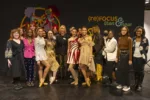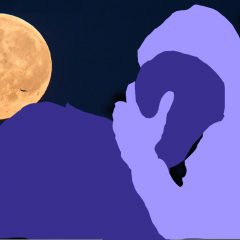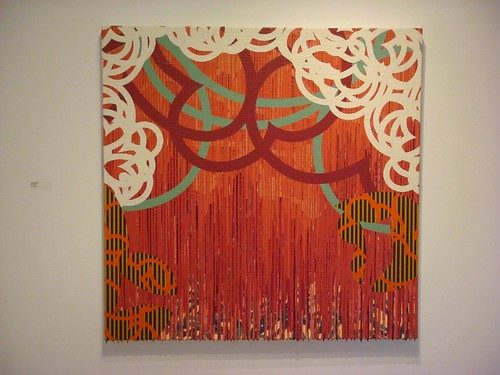
The layers of Charles Burwell’s new work in his one-man show Continuum at Bridgette Mayer Gallery have taken on a new physical presence and a sense of freedom. The new paintings of oil on canvas suddenly are juicy with unrestrained overlapping lines and intense, drippy color — so drippy that the paint corrugates the bottom edge of the canvas.
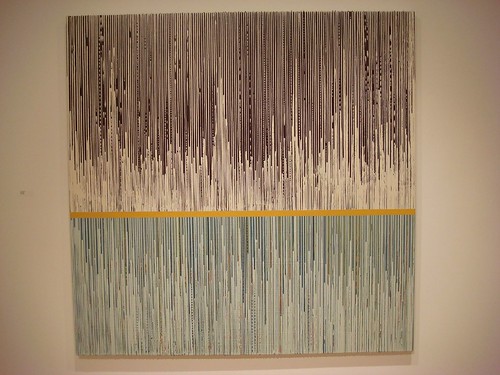
Charles Burwell, Mergers, 59×60 inches. This one, with its reliance on the drips and a horizon line, pitches the painting out of the drawing room and into a landscape or cityscape; yet it still manages to suggest a second reality or a reflection below the yellow stripe.
The under layers peek through Burwell’s signature repeating shapes, systematically applied like wallpaper patterns on the canvas. The outlines of those shapes, layered, broken up, and tangled remind me of the Pop Jonathan Lasker’s caligraphic tangles; but Burwell’s marks hew to their decorous system and never quite jump into Pop. The work behind the top layer peers through not just visually, but physically, creating ridges and planes beneath the top surface. Burwell has always had work suggesting layers of reality, and he’s always had a system, but the new works give meaning to the layers more successfully than past work. At the same time the work is more tactile than I remember from work past.
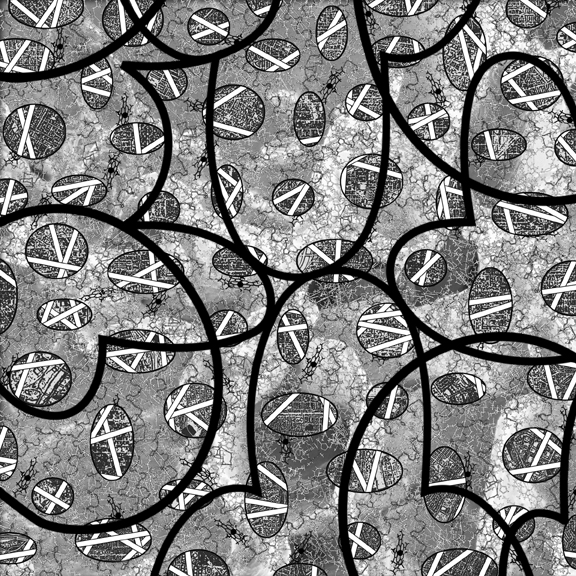
Charles Burwell, Flood, 21 x 21, archival digital print. I love the way the ovals become floating objects and then, with a shift of the eye, become portals. I also love the shadows and light, as if I’m looking at a sandy ocean shore on a sunny day.
The black and white digital prints too are interesting and surprising, even though they do not have physical layers. The layers are trompe l’oeil, and full of tension as top shifts to bottom and bottom to top. Again, Burwell makes some use of his elegant decorative shapes, but to new purpose and new concept. More compelling in these works are not the decorative shapes but the technological and biomorphic shapes–references to a reality that has not previously had such a strong presence in his work.
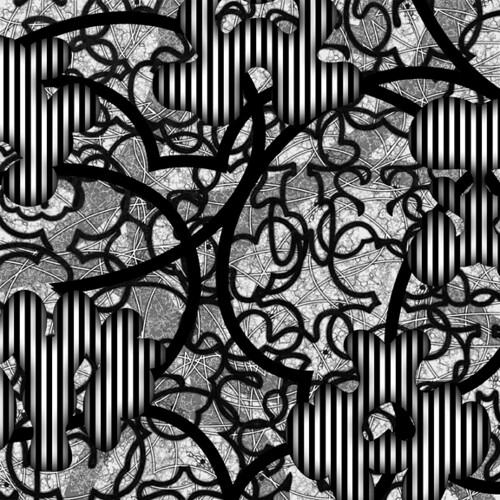
Charles Burwell, H2O, digital archival print, 21 x 21 inches; the shadows in this one are more specific–the belong to the black lines, thereby suggesting a grille protecting what is underneath. I also like push-pull, from front to back and back to front, suggested by the shadows around the edges of the striped areas. Sometimes they are the uninflected back layers, and sometimes they turn into some kind of menacing blob, like drops of mercury.
Both Flood and H2O make use of map imagery to create another world beneath or on top of the decorative forms, a sort of natural world poking up through the constraints of Burwell’s repetitive shapes. Other prints pile up tiny sea shells to suggest an underwater second world about to take back the human landscape. The bold lines that cut across the top of the works–also derived from Burwell’s vocabulary of shapes–take on an ominous tone of power and repression and desire for control.
I immediately thought of New Orleans, looking at these works, although I doubt that was what Burwell had in his mind.
In a way, what’s happened in this show is that Burwell’s systematic use of constrained marks has found its opposite–freedom and nature–and the works are strengthened by the contrast. While I was in the gallery, Mayer mentioned to me that the prints were developed using an archive of computer images that Burwell has been collecting for more than a decade.
Suzy Brandt’s Dam
In the vault space at Mayer is an installation, Dam, by artist Suzie Brandt, strata of fabric stacked up to cover the back wall of the compressed space. I liked how it called attention to the arched shape of the wall, and I liked Brandt’s colors–as ebullient as always. The edges of the fabric and their irregularity had such a strong physical presence that they emphasized the here and now of the space occupied, and overwhelmed any sense of representation or metaphor.
Although this space is so unlikely a venue for art, Mayer continues to find artists and ways to use it to good, surprising effect.




